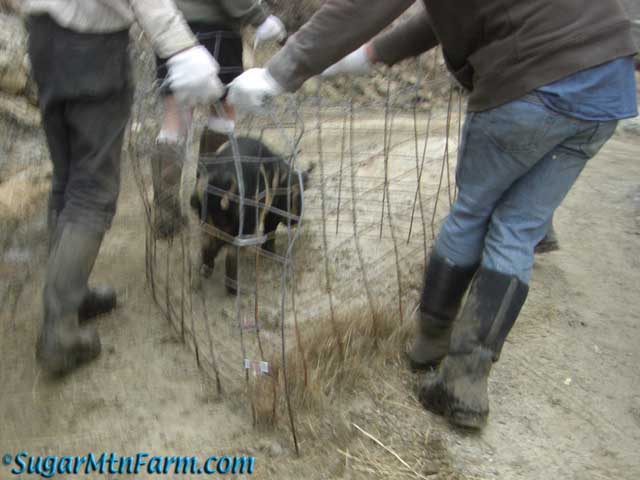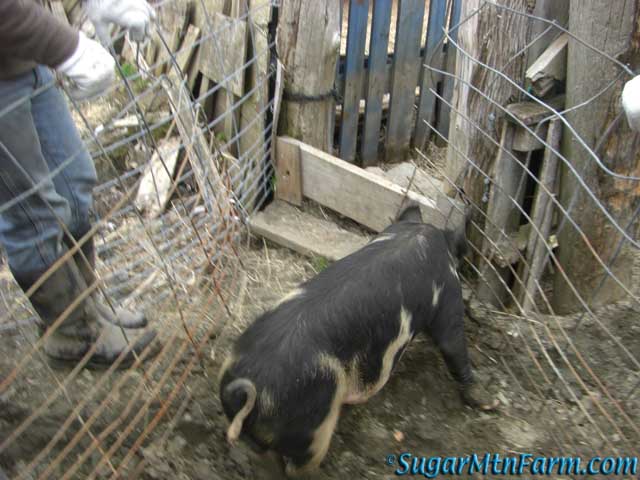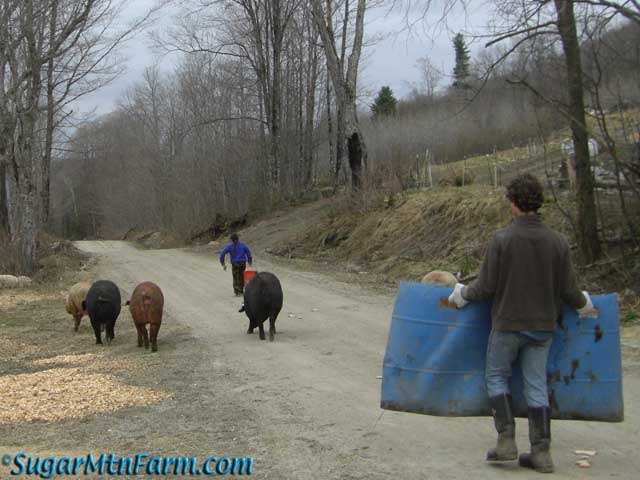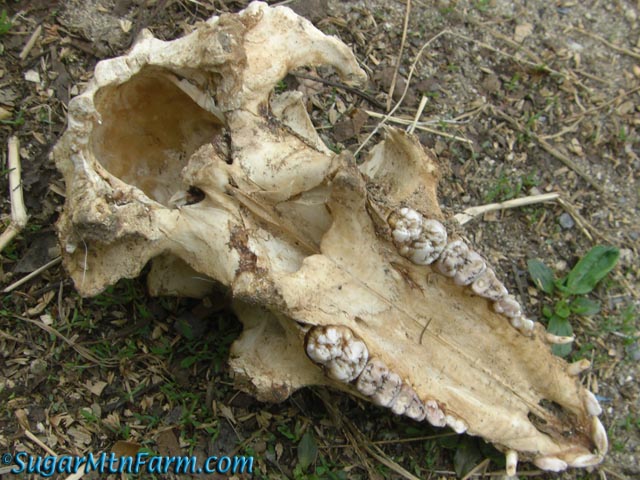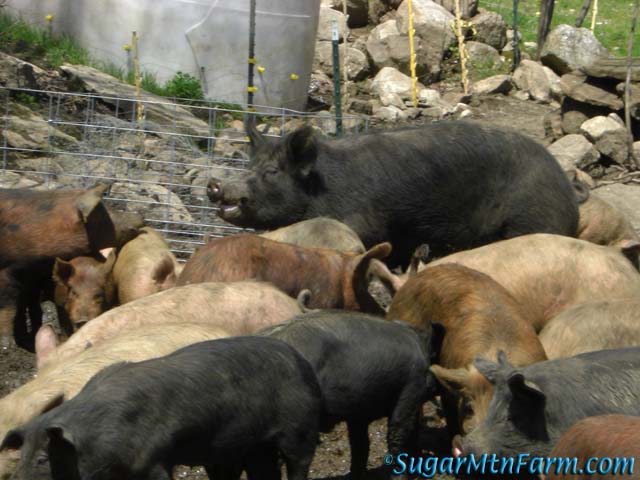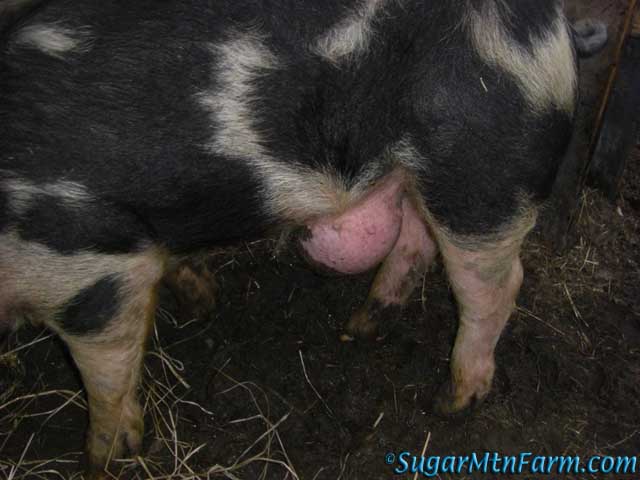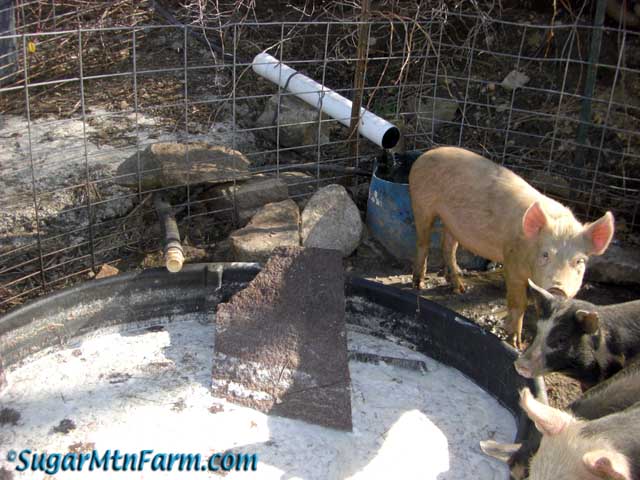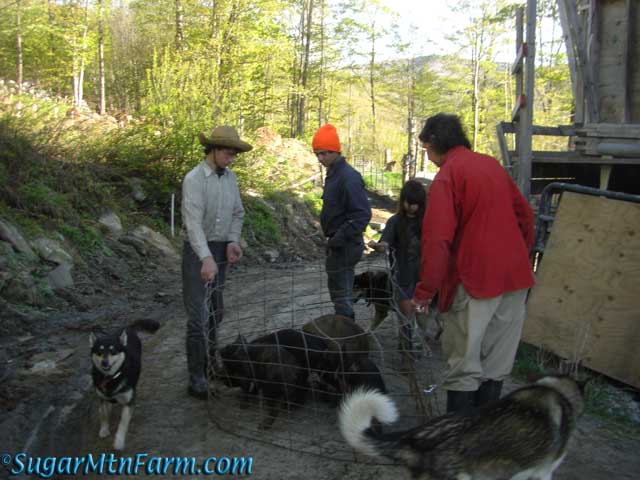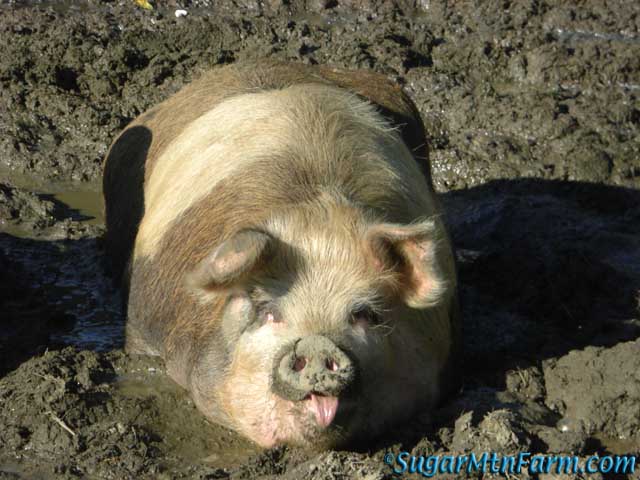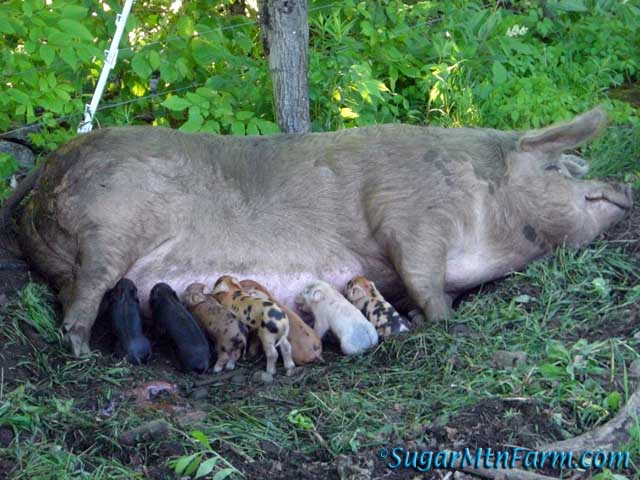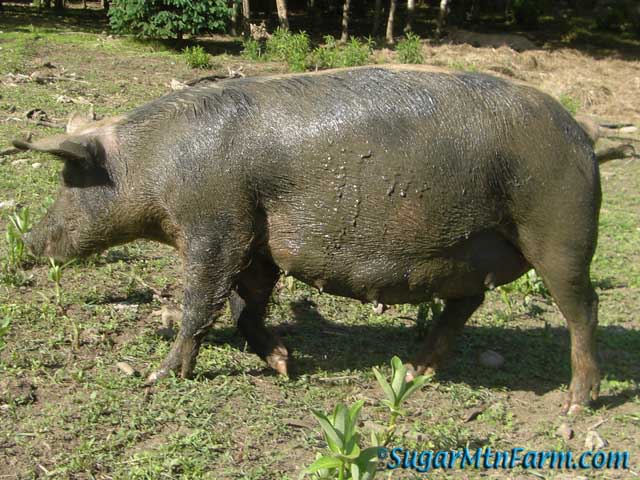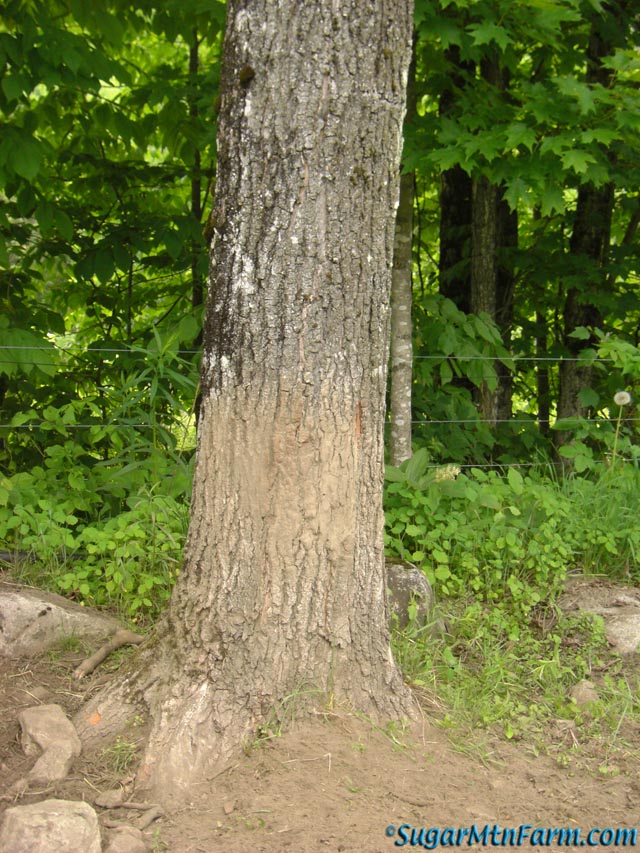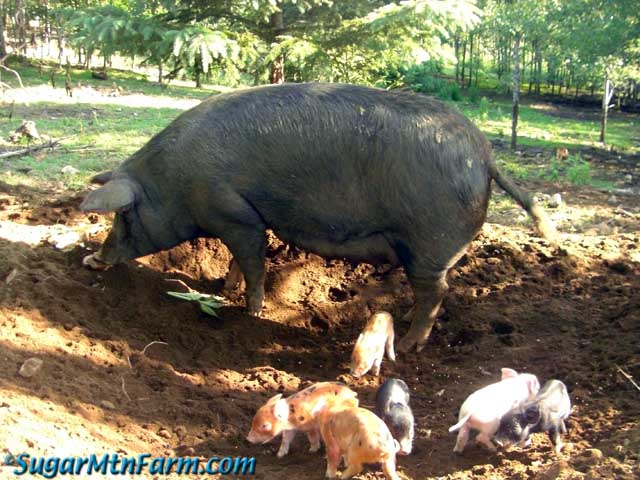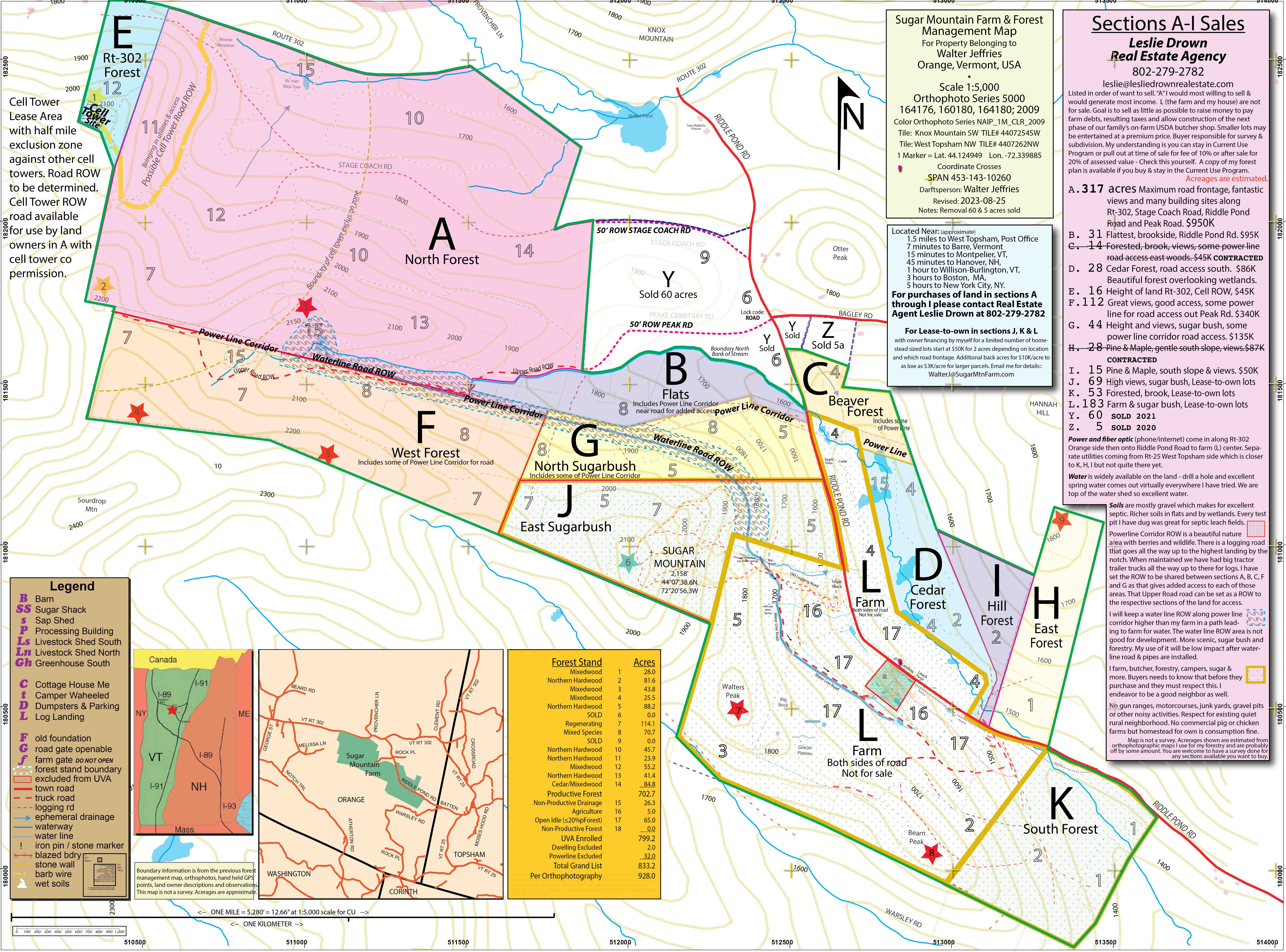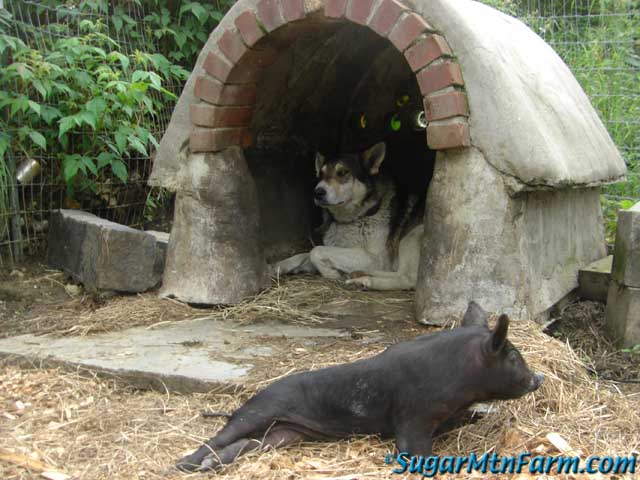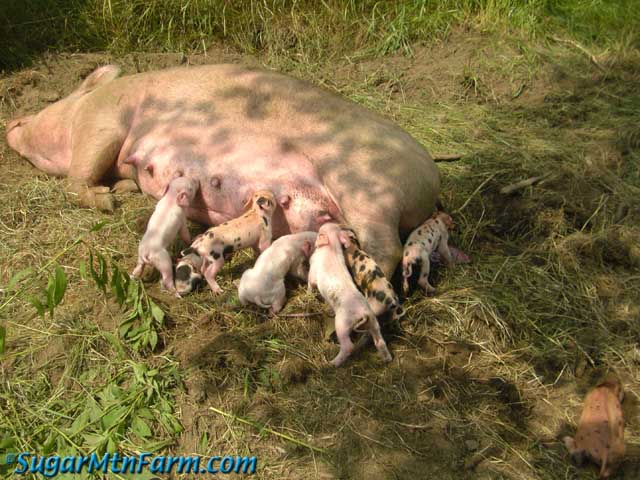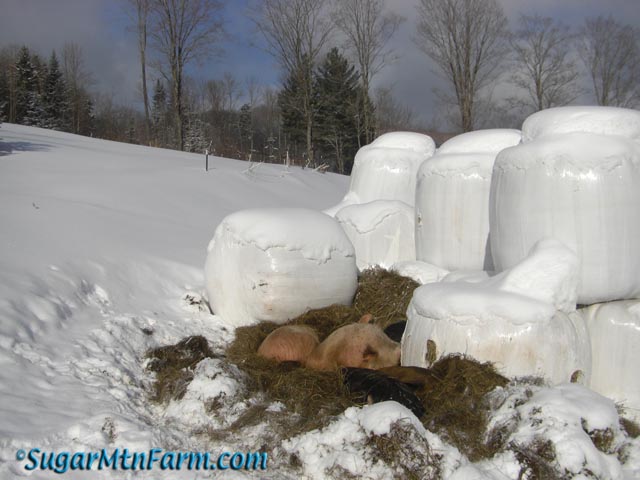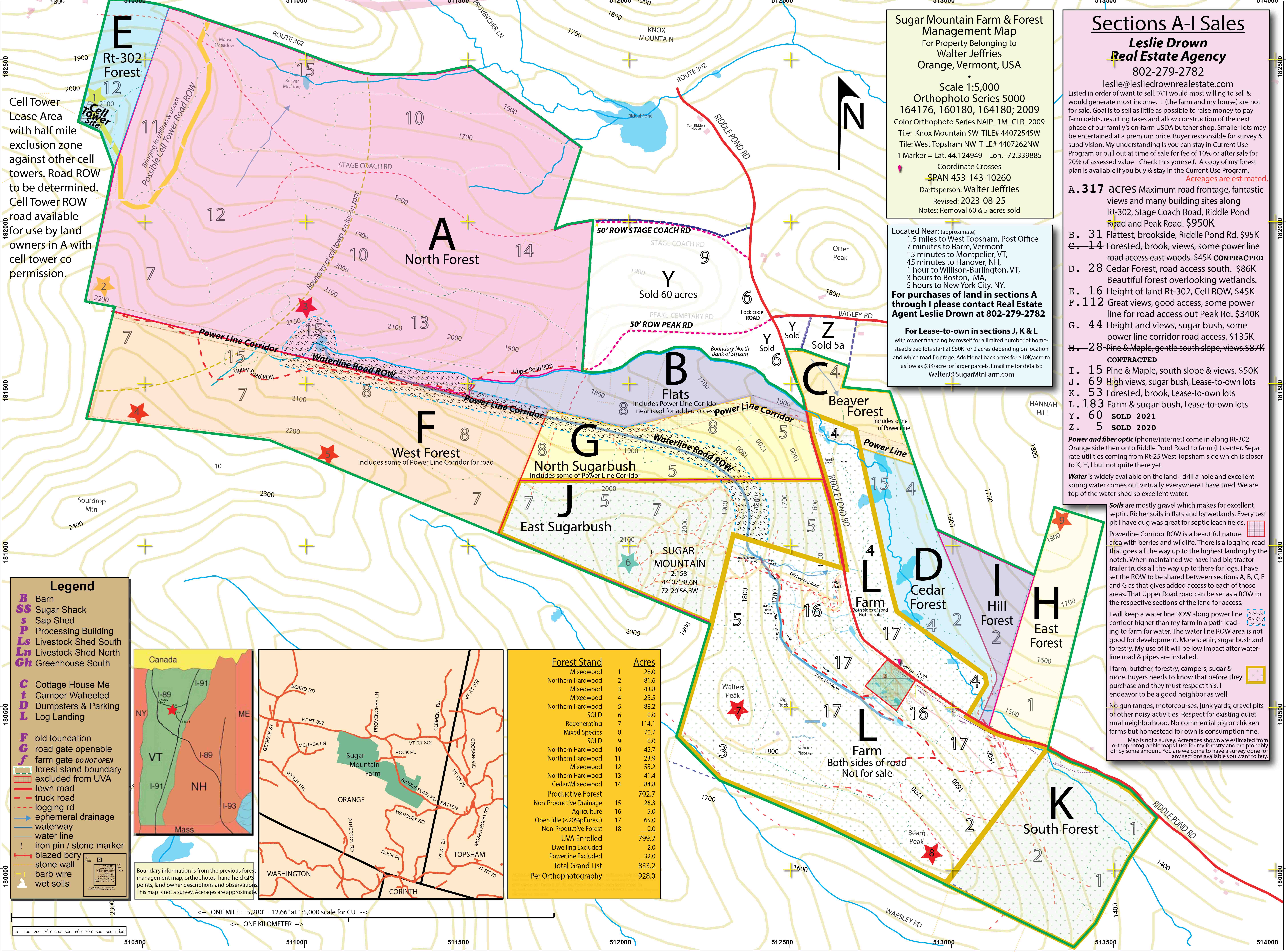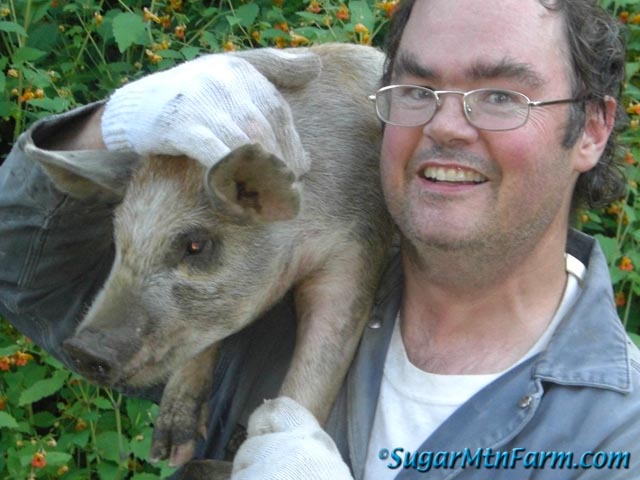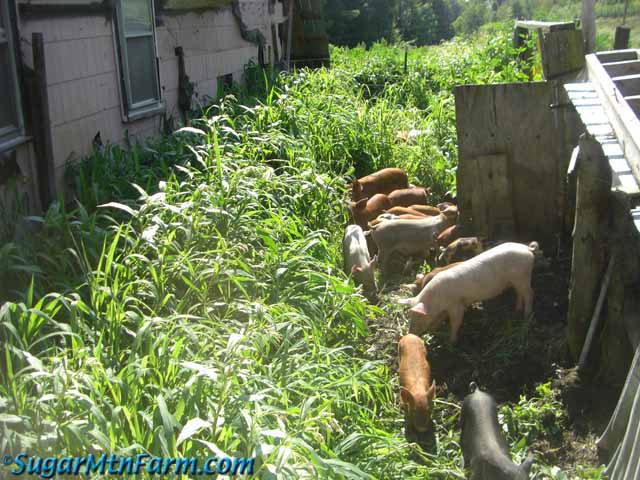![]()
Shoats in New Paddock
These are
shoats, small pigs after the weaning stage. They’ve been
rotationally grazed through the
weaning paddocks, just completed the lower garden paddock for its fall gleaning and are now moving into the next paddock. What is of particular interest is that this is a well measured dining experience.
The paddock shown above along the old farm house is 35′ x 15′ and has grasses and other forages grown up to a height of 34″. There were 80 shoat pigs averaging about 30 lbs each. They grazed down all the forages in this space in 24 hours. This was all their food. They had not yet rooted so we did not hit a ceiling effect. They were satisfied with dinner. Stuffed pigs.
With the 34″ tall growth of mostly grasses I see the numbers as:
35′ x 15′ / 80 shoats
gives 6.5625 sq-ft per pig. Divide that by pig size times 100:
6.5625 sq-ft / 30 lbs per shoat x 100
gives us:
21.875 sq-ft per hundred weight of pig
as the daily area each pig needs for grazing. Looking at it per hundred weight adjusts for size to an average middle size pig from piglet up to finisher size of about 250 lbs.
An acre is 208.71′ x 208.71′ or 43,560 sq-ft so divide that by the above number yielding:
1,991 grazing days per acre
If the pigs take 200 days† each to get to market weight from this age that gives:
9.96 ±1 pigs per acre or about 10 pigs per acre
Which is almost exactly the same number I’ve measured out on pasture with the entire herd and on smaller groups before. This is an interesting confirmation that we can sustainably raise about ten pigs per acre using managed rotational grazing. Note that this is without any commercial hog feed, no grains, no supplemental feed, just good quality pasture. Normally we do have whey available and the combination of whey plus pasture/hay is better than either alone. There is a synergy.
This paddock, which they mowed down in a day, will spring back from the seeds and roots in the soil and be better than ever for having had the grazing and the fertilizing of the pigs. This is actually it’s second cycle of the year. The pigs will move on to the next paddock and then the next as they rotate around the circle of life on the farm.
Outdoors: 63°F/41°F Sunny
Tiny Cottage: 66°F/59°F
Daily Spark: Patience is a must. Either that or be distracted enough to simulate patience…
†We find that boars of our best genetics, the Mainline, get to market weight in about six months from birth over the warm season. Gilts take about a month or so longer. Barrows, which we don’t have since we don’t castrate, take about as long as gilts, maybe slightly faster. The other lines (Yorkshire, Berkshire, Tamworth, Large Black, Blackieline, Redline and crosses of these) take a little longer than the Mainline which has seen the greatest improvement as I’ve been working the genetics for the longest. All of them take a month or two longer in the cold season when they are on hay rather than fresh pasture and some feed energy is going to staying warm. Genetics makes a big difference in how animals will pasture be they pigs, cows, chickens or what ever. Adding supplemental feed will speed up the growth.
